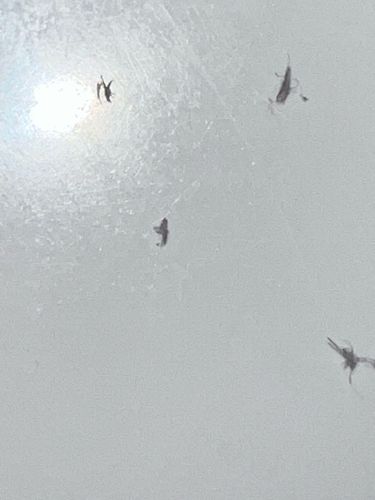Fungus Gnat
Scientific Name: Bradysia spp. (among others in Sciaridae and Mycetophilidae)
Order & Family: Diptera, Sciaridae (dark-winged fungus gnats) or Mycetophilidae (true fungus gnats)
Size: 2-8 mm (approx. 0.08-0.3 inches)

Natural Habitat
Damp, organic-rich environments, often associated with potting soil, decaying plant matter, greenhouses, and homes with houseplants. Larvae live in soil.
Diet & Feeding
Adult fungus gnats typically do not feed or feed on liquids like nectar. Larvae feed on fungi, decaying organic matter, and fine root hairs of plants.
Behavior Patterns
Adults are weak fliers and are often seen near houseplants or windows. They are attracted to light. Females lay eggs in moist soil. Larvae develop in the soil, pupate, and then emerge as adults. Their life cycle is relatively short, around 3-4 weeks.
Risks & Benefits
Potential risks include being a nuisance, especially in large numbers. Larvae can damage plant roots, particularly in seedlings and young plants, leading to wilting, stunted growth, and even plant death in severe infestations. They do not bite humans or transmit diseases. Benefits are minimal but they can aid in decomposition of organic matter.
Identified on: 10/29/2025